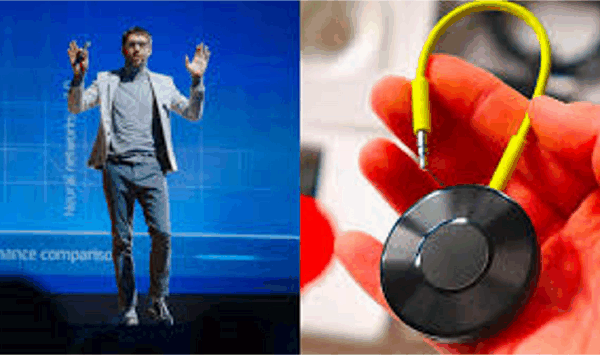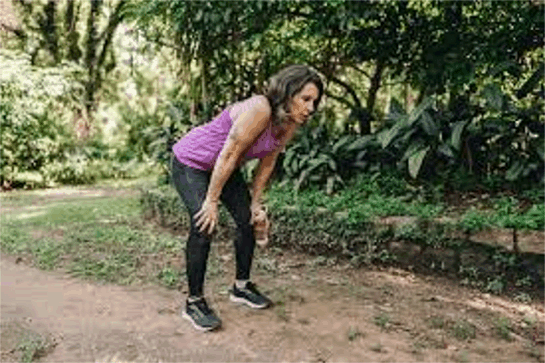올해는 거의 7만 명의 일본인이 홀로 죽을 것이고 인구가 빠르게 고령화되면서 상황은 훨씬 더 악화될 수 있습니다.
북아시아 특파원 제임스 오튼과 아카네 사이키
주제: 죽음과 임종
10시간 전
수만 명의 일본 노인이 매년 홀로 죽는다
시오타 타쿠야의 청소 회사가 도쿄의 작은 아파트로 불려갔을 때, 그 아파트의 노인 거주자는 3주 이상 바닥에 누워 죽어 있었습니다.
70대였던 거주자는 집주인이 미납 임대료를 청구하려고 했을 때야 발견되었습니다.
그녀는 가족도 없고 그녀를 돌보는 친구도 없었습니다.
그녀는 고립된 채로 살다가 죽었습니다.
도쿄의 습한 여름이 한창인 가운데, 그 광경은 너무나 끔찍해서 시오타 씨는 그 여성이 발견된 마루판을 잘라내야 했습니다.
그는 “방의 냄새가 너무 강했습니다.”라고 회상합니다.
“우리는 그 액체를 처리한 다음 바닥을 잘라내고 살균했습니다.”
타쿠야 시오타는 작은 아파트 내부의 부분적으로 제거된 바닥을 보면서 완전한 PPE를 착용하고 있습니다.
타쿠야 시오타는 점점 더 많은 사람들이 고립되어 죽으면서 더 많은 일을 하게 되었다고 말합니다. (ABC 뉴스: 제임스 오튼)
시오타 씨와 그의 동료인 교헤이 쿠도의 일은 불쾌하지만 필수적입니다.
일본은 오랫동안 “고독한 죽음”으로 알려진 문제에 씨름해 왔습니다. 고립된 사람들은 지원 네트워크 없이 살다가 죽고 장기간 발견되지 않습니다.
20년 이상 전에 악명 높은 한 사례에서 한 노인이 사망한 지 3년 후에 발견되었습니다.
그의 임대료와 공과금은 그의 은행 계좌에서 자동으로 공제되었고, 마침내 고갈되자 당국이 조사에 나섰습니다.
일본인들은 두나 아래에서 후퇴했을까요?
사진에는 한 남자가 침실 창밖을 내다보고 있습니다. 한 남자가 침실 창밖을 내다보고 있습니다.
세이코 고토는 부끄럽고 절망적이었습니다. 그녀는 세상에 쓸모없는 사람을 키운 것이 두려웠습니다.
올해 일본 정부는 처음으로 공식적으로 고독사 사망자 수를 발표했습니다.
처음 3개월 동안 거의 22,000명이 고독사했고 오랜 기간 동안 발견되지 않았습니다.
대부분이 노인입니다.
이는 올해 일본에서 약 88,000명이 고독사할 것으로 예상된다는 것을 의미합니다.
이 위기는 악화될 뿐입니다. 일본은 세계에서 가장 고령화된 사회로, 10명 중 1명이 80세 이상입니다.
하지만 이는 단순히 고령화 인구 문제가 아닙니다.
많은 사람들에게 일본의 고독사 사망자 수는 사회가 공동체 의식을 잃었음을 반영합니다. 이웃들은 더 이상 서로를 돌보지 않고 많은 주민들은 스스로를 고립시키기로 선택합니다.
“요청 수가 상당히 증가하고 있습니다.” 시오타 씨가 말했습니다.
“우리는 특히 여름에 1년에 약 100건 이상의 사례를 처리합니다. 바쁜 시즌입니다.”
타쿠야 시오타와 그의 오프사이더는 아파트를 청소하는 동안 큰 비닐 봉지에 물건을 넣을 때 PPE를 착용합니다.
타쿠야 시오타는 정부가 사람들이 연결되도록 돕기 위해 지역 사회 단체에 자금을 지원하기를 원합니다. (ABC 뉴스: 제임스 오튼)
쇠퇴하는 붐 타운의 노령 주민
도쿄에서 기차로 단시간 거리에 있는 요코하마에는 고토부키 지구가 있습니다.
이곳은 일본 전역에서 온 불량배들이 옛 삶에서 벗어나 대도시에서 일자리를 찾기 위해 모여든 인구 밀집 교외입니다.
많은 아파트가 5제곱미터보다 작으며 주방과 욕실과 같은 공용 시설이 있습니다.
1980년대 일본의 붐 시절에는 번창하고 분주한 곳이었습니다.
지금은 대부분 노인이고 알코올 중독과 정신 건강이 좋지 않은 등 여러 가지 건강 문제가 있습니다.
오사무 야마나카가 집에서 예약된 건강 검진을 처음 시작한 곳이 바로 여기입니다.
“방에서 뼈만 남은 채로 죽은 사람들이 발견되기도 했습니다.”라고 그는 말했습니다.
“저는 젊었고 용서받을 수 없는 일이라고 생각했습니다.”
오사무 야마나카는 건물 앞에서 사진을 찍을 때 파란색과 흰색 패턴의 짧은 소매 셔츠와 안경을 착용했습니다.
오사무 야마나카는 외로운 환자를 방문하여 건강 검진을 받고 인간적인 관계를 맺게 합니다. (ABC 뉴스: 제임스 오튼)
야마나카 박사는 매주 외로운 환자를 방문하여 일련의 검사를 실시합니다.
일부는 생의 마지막 단계에 있습니다.
야마나카 박사는 치료 옵션에 대해 논의하지만 많은 환자가 의료 개입을 거부합니다.
그들은 포기했습니다. 그리고 야마나카 박사는 그들의 결정을 존중합니다. 하지만 그는 계속해서 그들을 확인할 것입니다.
“제가 그렇게 하지 않았다면 외로운 죽음이 엄청나게 많았을 것입니다.”라고 그는 말합니다.
이러한 방문은 중요한 인간적 접촉을 제공하기 위한 것입니다.
“저는 정말 하류 계층의 사람입니다.” 환자인 74세의 야스오 이나야마가 말했습니다.
“사회에서 가장 낮은 계층의 사람들을 상대하려는 사람은 많지 않습니다. 하지만 그는 저에게 찾아오려고 합니다. 감사합니다.”
오사무 야마나카가 건강 검진을 받는 동안 침대 가장자리에 앉아 있는 환자 야스오 이나야마를 바라보고 있습니다.
야스오 이나야마는 야마나카 박사의 방문에 감사하다고 말했습니다. (ABC 뉴스: 제임스 오튼)
일본 전역에서 건강 문제가 있는 노인 거주자는 다양한 수준의 재택 치료를 받을 자격이 있습니다.
이 서비스는 야마 박사가 나카가 시작했습니다.
야마나카 박사는 업무량이 관리 가능하고 일본의 고령화 문제에 대해 걱정하지 않는다고 말합니다.
하지만 그는 의료계가 고립 사망 딜레마를 해결하기 위해 할 수 있는 일이 제한되어 있다고 말합니다.
때때로 사람들은 도움을 요청하는 방법을 모릅니다.
다른 사람들은 가족과 사회에서 더 광범위하게 단절하기로 선택했습니다.
모든 고립 사망이 노인인 것은 아닙니다.
이런 경우 지역 사회가 지원을 제공해야 합니다.
야마나카 박사는 “이웃과 어울리지 않으면 고립 사망에 이르게 됩니다.”라고 말합니다.
“이를 예방하는 것은 매우 어렵습니다.”
고립 사망을 예방하기 위한 지역 사회 구축
81세의 요시코 사토가 받아들인 도전입니다.
그녀의 거대한 아파트 단지는 한때 가족들로 가득했습니다.
하지만 지금은 혼자 사는 노인 거주자 약 400명이 살고 있습니다.
요시코 사토
요시코 사토는 외로운 노인 거주자들을 확인하고 외롭게 죽는 사람이 줄어들도록 하는 단체를 시작했습니다. (ABC 뉴스: 제임스 오튼)
20년 남짓 전, 그녀는 그녀의 소중한 친구를 포함한 외로운 사망자가 잇따라 발생한 후 Zero Lonely Deaths 커뮤니티 캠페인을 시작했습니다.
“매년 5명 중 4명이 외롭게 죽었습니다.”라고 그녀는 말했습니다.
“주변 사람들이 우리의 좋은 친구가 왜 이렇게 외롭고 외롭게 죽는지 묻기 시작했습니다.”
자원봉사자 그룹이 동네의 노인 거주자들을 정기적으로 점검하기 시작했습니다.
이 단체는 또한 의심스러운 활동에 대한 경고를 받기 위해 기관과 협력했습니다.
예를 들어, 등록된 아파트에서 전력 사용량이 갑자기 장기간 감소하면 전력 회사에서 그들에게 전화를 겁니다.
“5년 만에 외로운 사망자가 더 이상 없다고 말할 수 있었습니다.”라고 사토 씨가 말했습니다.
시게코 마에다가 휴지를 깔고 작은 테이블에 앉아 친구와 이야기를 나누고 있습니다.
시게코 마에다는 사토 씨가 운영하는 이니셔티브가 사람들이 함께 모이는 데 도움이 된다고 말합니다. (ABC 뉴스: 제임스 오튼)
이 프로그램은 단순히 고립된 죽음을 예방하는 것 이상으로 발전했습니다.
또한 생명을 구하고 지역 사회 의식을 회복하고 있습니다.
한 사례에서는 향초가 넘어져 베개에 불이 붙은 후 잠자던 남자가 구해졌습니다.
또 다른 사례에서는 당뇨병을 앓고 있는 노인이 움직이지 못하는 채로 발견되어 병원으로 이송되었습니다.
“우리 단지에서는 모두가 함께 모이고 있습니다.” 노인 거주자 시게코 마에다가 자랑스럽게 설명합니다.
사토 씨는 정기적으로 방문하는 곳 중 하나에 신선한 야채를 가져오고 그 대가로 갓 조리한 점심을 받습니다.
노인 거주자 아키코 요시다는 “그녀가 준 야채로 요리하는 것을 고대합니다.”라고 말합니다.
“그것이 제 삶을 살 만한 가치로 만듭니다.”
아키코 요시다
아키코 요시다는 사토 씨와의 정기적인 만남을 고대합니다. (ABC 뉴스: 제임스 오튼)
이니셔티브를 계속 진행하는 데 필요한 자금
요시코 사토의 프로그램은 성공적이었지만, 그녀는 미래에 대해 걱정하고 있습니다.
그녀와 같은 지역 사회 이니셔티브는 중요성에도 불구하고 해체되고 있습니다.
“지역 사회는 모든 사람이 만들어야 하지만, 일본에서는 현재 불가능합니다.”라고 그녀는 말합니다.
일본의 신생아 수가 새로운 최저치로 감소
사진은 스모 선수가 품은 두 아기를 보여줍니다. 스모 선수가 품은 두 아기.
일본에서 태어난 아기 수가 8년 연속 감소하여 작년에 새로운 최저치를 기록했습니다.
“사람들이 이기적이 되어 주민 협회에 가입할 필요가 없다거나 주민 협회가 필요 없다고 말하고 있습니다.”
청소부 타쿠야 시오타가 공유하는 우려 사항입니다.
두 사람 모두 정부에 지역 사회 단체에 재정 지원을 제공할 것을 촉구하고 있습니다.
“일본에서는 사람과 지역 사회 간의 상호 작용이 부족합니다. 매우 흔한 일입니다.”라고 시오타 씨가 말합니다.
“외로움이 수명을 단축시키는 가장 큰 요인이라는 자료가 있습니다.
“일본은 우울증 사회입니다.”
10시간 전 게시10시간 전, 4시간 전 업데이트
lmost 70,000 Japanese people will die alone this year and with the population rapidly aging it could become much worse
By North Asia correspondent James Oaten and Akane Saiki
10h ago10 hours ago
abc.net.au/news/dying-alone-japan-solitary-deaths/104252356
Link copiedShare article
When Takuya Shiota’s cleaning agency was called to a small Tokyo apartment, its elderly resident had been lying dead on the floor for more than three weeks.
The occupant, aged in her 70s, was only discovered when her landlord tried to claim unpaid rent.
She had no family and no friends checking on her.
She lived, and died, in solitude.
With Tokyo’s humid summer in full force, the scene was so ghastly, Mr Shiota had to cut out the floorboards where the woman was found.
“The smell in the room was so strong,” he recalls.
“We treated the fluid and then cut out the floor and disinfected it.”
The work of Mr Shiota and his colleague Kyohei Kudo is unpleasant, but vital.
Japan has long grappled with what’s known as “solitary deaths”, where people living without a support network die and remain undiscovered for prolonged periods.
In one infamous case, more than two decades ago, an elderly man was discovered three years after death.
His rent and utilities were automatically deducted from his bank account, and when it was finally depleted, authorities came to investigate.Have Japanese retreated under the doona?
Photo shows A man looks out his bedroom window.
Seiko Goto was ashamed and desperate: She feared she had raised a person who was of no use to the world.
This year, the Japanese government revealed its first official tally of solitary deaths.
In the first three months, almost 22,000 people died alone and were undiscovered for a prolonged period.
Most are elderly.
This means about 88,000 people are expected to die solitary deaths in Japan this year.
It’s a crisis that is only going to worsen — Japan has the world’s oldest society, with more than one in 10 people older than 80.
But it’s not just an aging-population problem.
For many, Japan’s solitary deaths reflect a society that has lost a sense of community; neighbours no longer look out for one another, while many residents choose to isolate themselves.
“The number of requests is increasing considerably,” Mr Shiota said.
“We do roughly more than 100 cases a year, especially in the summer. It’s the busy season.”
Aging residents in dwindling boom town
In Yokohama, a city only a short train ride from Tokyo, is the district of Kotobuki.
It’s a densely packed suburb where misfits came from all over Japan to escape their old life and find work in the big city.
Many apartments are tiny – often smaller than five square metres — with shared facilities like kitchens and bathrooms.
During Japan’s boom years of the 1980s, it was a thriving, bustling place.
Now, the residents are mostly elderly and often with a litany of health problems, including alcoholism and poor mental health.
It was here that Osamu Yamanaka pioneered at-home, scheduled health checks.
“There were people who had been found dead in their room, even skeletal,” he said.
“I was young, and I thought it was unforgivable.”
Every week, Dr Yamanaka visits his lonely patients to conduct a series of tests.
Some are in the final phases of life.
Dr Yamanaka discusses their treatment options, but many refuse medical intervention.
They’ve given up. And Dr Yamanaka respects their decision. But he’ll keep checking on them.
“If I wasn’t doing it, there would be an awful lot of lonely deaths,” he says.
These visits are about providing important human contact.
“I’m such a low-class person,” patient Yasuo Inayama, 74, says.
“There aren’t many people who are willing to deal with people from the lowest strata of society. But he is willing to come to me. I appreciate it.”
Across Japan, elderly residents suffering health problems may be eligible for varying levels of at-home care.
It’s a service that is now much more accessible compared with when Dr Yamanaka started.
Dr Yamanaka says the workload is manageable and he doesn’t worry about Japan’s aging population woes.
But he says there is only so much the medical profession can do to tackle the solitary deaths dilemma.
Sometimes people don’t know how to reach out for help.
Others have chosen to cut themselves off from family and society more broadly.
Not all solitary deaths are elderly people.
In these cases, it’s up to the community to try to provide support.
“If they do not socialise with their neighbours, they will end up with solitary death,” Dr Yamanaka says.
“It is very difficult to prevent it.”
Building community to prevent solitary deaths
It’s a challenge Yoshiko Sato, 81, has accepted.
Her huge apartment complex was once filled with families.
But now, it’s home to almost 400 elderly residents who live alone.
Just over two decades ago, she established the Zero Lonely Deaths community campaign, after a spate of solitary deaths, which included a dear friend of hers.
“Every year, four of five people were dying alone,” she said.
“People around me started to ask why such a good friend of ours was dying so lonely and alone.”
A group of volunteers started to conduct routine checks on the neighbourhood’s elderly residents.
The group also linked up with agencies to be alerted to suspicious activity.
For example, the power company calls them if there is a sudden and prolonged drop in power usage at a registered apartment.
“After five years, we were able to say that there were no more lonely deaths,” Ms Sato said.
The program has evolved into much more than simply preventing solitary deaths.
It’s also saving lives and restoring a sense of community.
In one case, a sleeping man was saved after an incense candle fell over and ignited a pillow.
In another, an elderly diabetic man was found immobile and rushed to hospital.
“In our complex, everyone is coming together,” elderly resident Shigeko Maeda explains, proudly.
For one of her regular visits, Ms Sato brings fresh vegetables, and in return gets a freshly cooked lunch.
“I look forward to cooking with the vegetables I receive from her,” elderly resident Akiko Yoshida says.
“That’s what makes my life worth living.”
Money needed to keep initiatives going
While Yoshiko Sato’s program has been a success, she worries for the future.
Community initiatives like hers are dissolving, despite their importance.
“A community has to be built up by everyone, but that is not possible in Japan at the moment,” she says.Newborns in Japan fall to a new low
Photo shows two babies held by sumo wrestlers.
The number of babies born in Japan falls for an eighth straight year to a record new low last year.
“People are becoming selfish, saying that they don’t have to join a residents’ association, or that they don’t need to have a residents’ association.”
It’s a concern cleaner Takuya Shiota shares.
Both are calling on the government to provide financial support to community groups.
“There is a lack of interaction in Japan between people and local communities, it is very common,” Mr Shiota says.
“There is data that loneliness is the biggest factor in shortening life expectancy.
“Japan is a society of depression.”
Posted 10h ago10 hours ago, updated 4h ago










